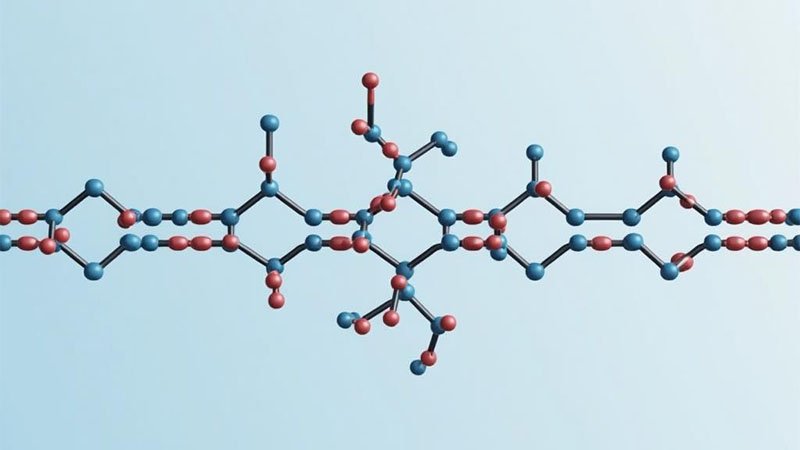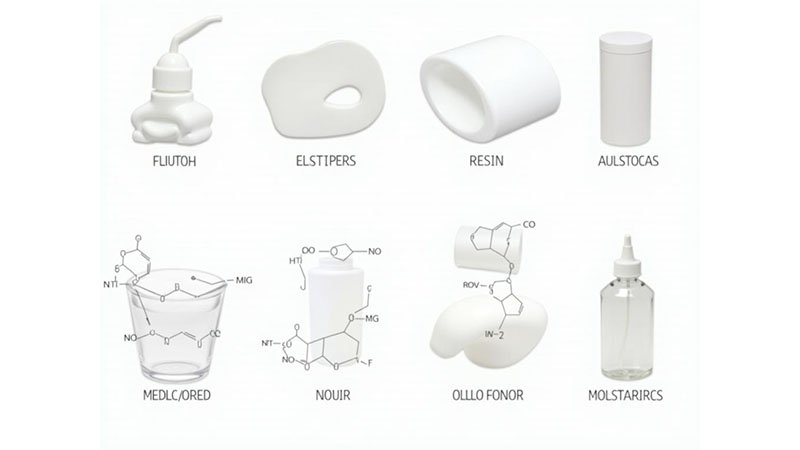Silicone is one of those materials we use almost every day, but how much do we really know about its chemistry? Whether you’re using silicone in kitchenware, medical devices, or industrial parts, you’ve probably wondered what exactly makes it tick. So, let’s break it down and explore the silicone chemical formula.
What is the silicone chemical formula? The general chemical formula for silicone is (SiO2)n, but it’s more complex than that. Silicones are a group of synthetic polymers that consist of silicon, oxygen, carbon, and hydrogen atoms. The most basic structure is a repeating unit of silicon-oxygen bonds, forming a backbone. The compound can be modified with other elements depending on the specific type of silicone.
Silicone’s versatile properties come from its unique molecular structure, which makes it one of the most flexible, durable, and temperature-resistant materials. Let’s dive into the details!
The Basic Building Blocks of Silicone
At the heart of silicone is silicon (Si), an element that makes up a large portion of Earth’s crust. Silicon atoms bond with oxygen (O) atoms to form a repeating chain-like structure. The basic unit of silicone is a silicon-oxygen (Si-O) bond, often referred to as the “siloxane” bond.
The basic chemical formula for a siloxane polymer is (SiO2)n, where “n” represents the number of repeating units in the chain. This structure gives silicone its flexibility and heat resistance, making it a preferred material in everything from bakeware to automotive seals.

Why Is Silicone So Special?
The combination of silicon and oxygen is what makes silicone stand out from other polymers. Unlike carbon-based plastics, which are derived from petroleum, silicone’s backbone is based on silicon, a more abundant and sustainable element. This unique structure also gives silicone its remarkable thermal stability, water resistance, and non-toxic properties.
In addition, silicone molecules are often modified with other elements, such as methyl groups (CH₃), which help create different types of silicone for various applications. For example, adding methyl groups results in a more flexible material, while other additives can enhance silicone’s chemical resistance or electrical properties.
The Role of Oxygen in Silicone
Oxygen plays a crucial role in the properties of silicone. The silicon-oxygen bond in the polymer chain is very stable, which is why silicone is so heat-resistant and durable. The oxygen atoms create a “link” between the silicon atoms, making the material more resistant to environmental wear and tear.
Moreover, the oxygen-silicon structure gives silicone a higher resistance to UV radiation and oxidation compared to other synthetic materials. This is why silicone products, like baby bottle nipples or outdoor seals, can maintain their integrity for so long, even with prolonged exposure to the elements.
Different Types of Silicone and Their Chemical Variations
Silicone comes in many different forms, each with slight variations in its chemical structure to suit specific needs. Some common types include:
- Elastomers: These are the most common type of silicone and are used in flexible applications like kitchenware, seals, and medical devices. They have a high molecular weight and are formed by curing a base material with a hardener.
- Fluids: Silicone fluids are low-viscosity and are often used as lubricants, hydraulic fluids, or in cosmetic products.
- Resins: Silicone resins have a more rigid structure and are used for coatings or electrical insulation. They offer excellent heat resistance and electrical properties.
The key difference in the chemical formula between these variations lies in the types of side chains and cross-linking agents added to the basic silicon-oxygen backbone.

Why Does the Chemical Formula Matter?
Understanding the silicone chemical formula can help us appreciate its versatility in different industries. Its stability and resistance to heat and chemicals make it ideal for applications that demand durability, like automotive gaskets or medical implants.
Additionally, the flexibility in its structure allows manufacturers to customize silicone for specific purposes, whether it’s for flexible kitchen utensils or rigid construction materials. Knowing the basic formula can also help engineers and chemists design more efficient and specialized silicone products.
How Silicone Differs from Other Polymers
Silicone’s chemical formula sets it apart from other commonly used polymers. For example, plastic is primarily made of carbon atoms arranged in long chains, while silicone contains silicon and oxygen. This key difference makes silicone much more resistant to high temperatures, oxidation, and UV rays than traditional plastics.
Furthermore, silicone is chemically inert, which means it doesn’t react with many substances, including water, oils, or solvents. This makes it a safe choice for use in everything from baby products to food preparation.
Conclusion
So, what’s the silicone chemical formula? In its simplest form, it’s a polymer made of silicon and oxygen (SiO₂), but it’s much more complex when you consider all the variations and additives that can be used. The unique properties of silicone come from this molecular structure, giving it unparalleled flexibility, durability, and resistance to heat.
By understanding silicone’s chemical makeup, we gain insight into why it’s such a versatile material used across a wide range of industries. Whether you’re using silicone for consumer goods or in specialized industrial applications, its chemistry ensures top performance.